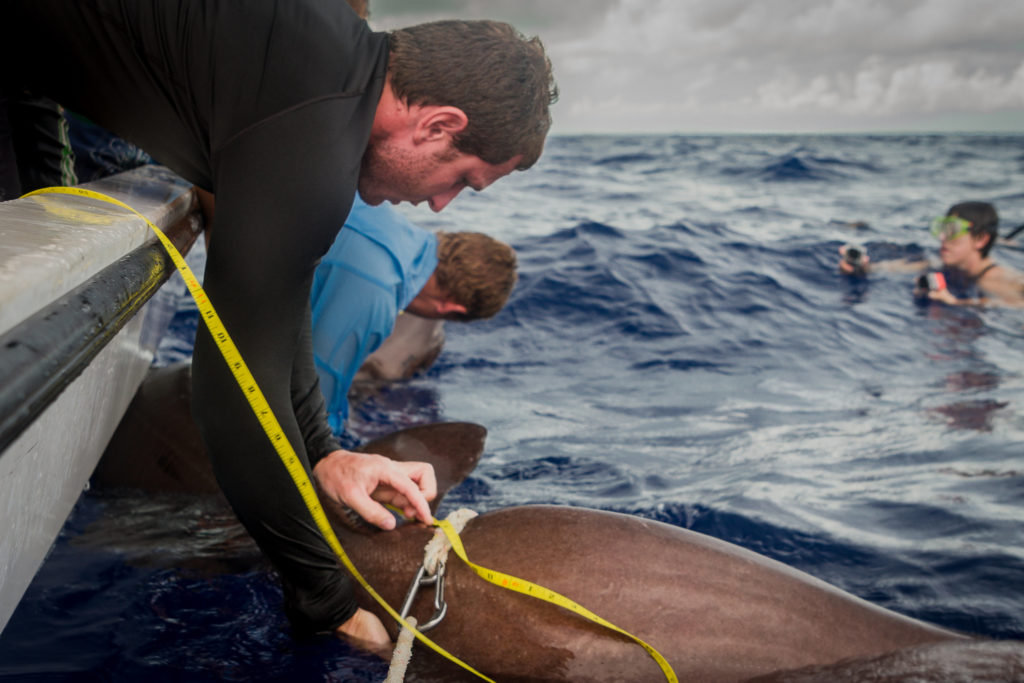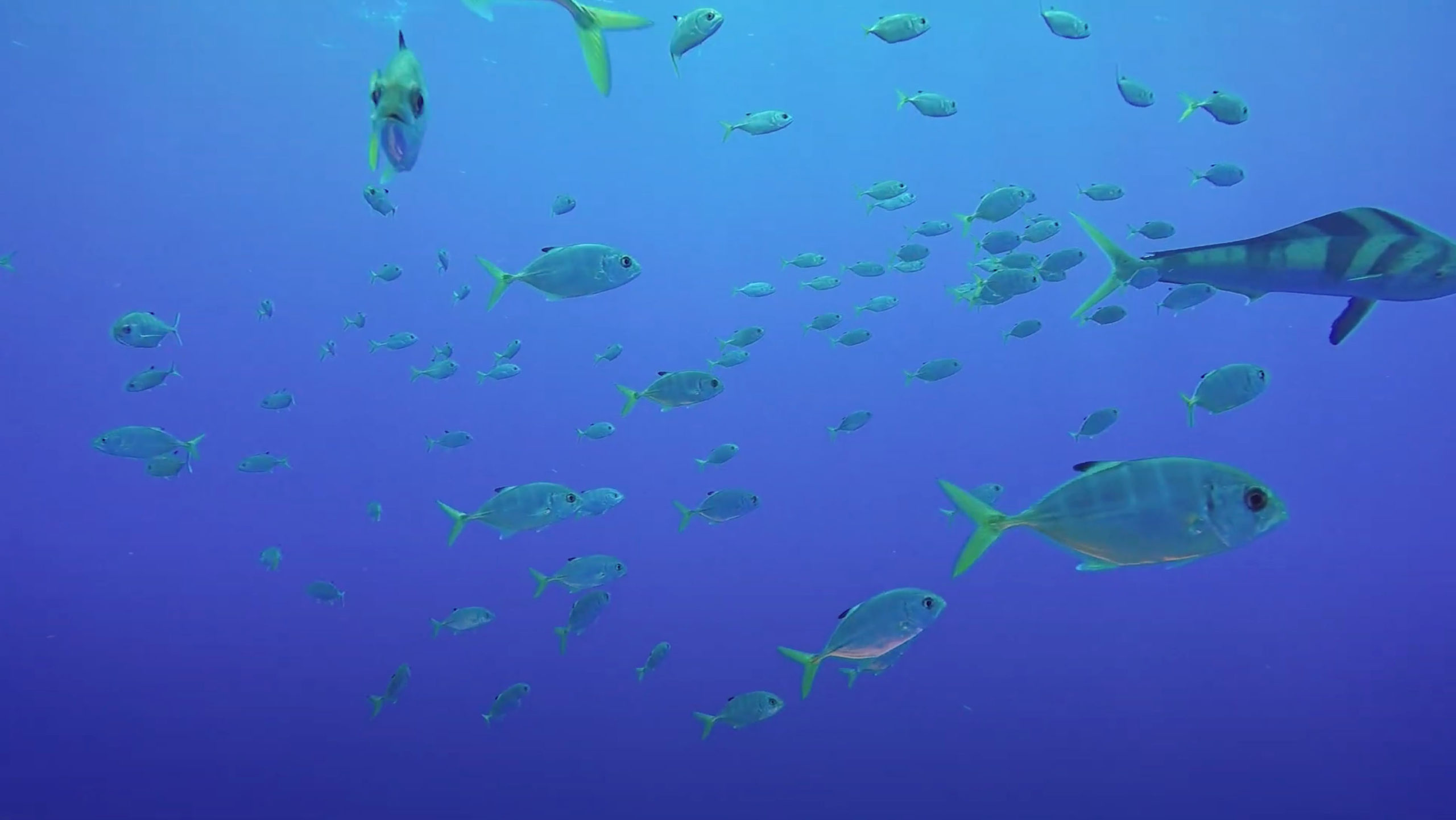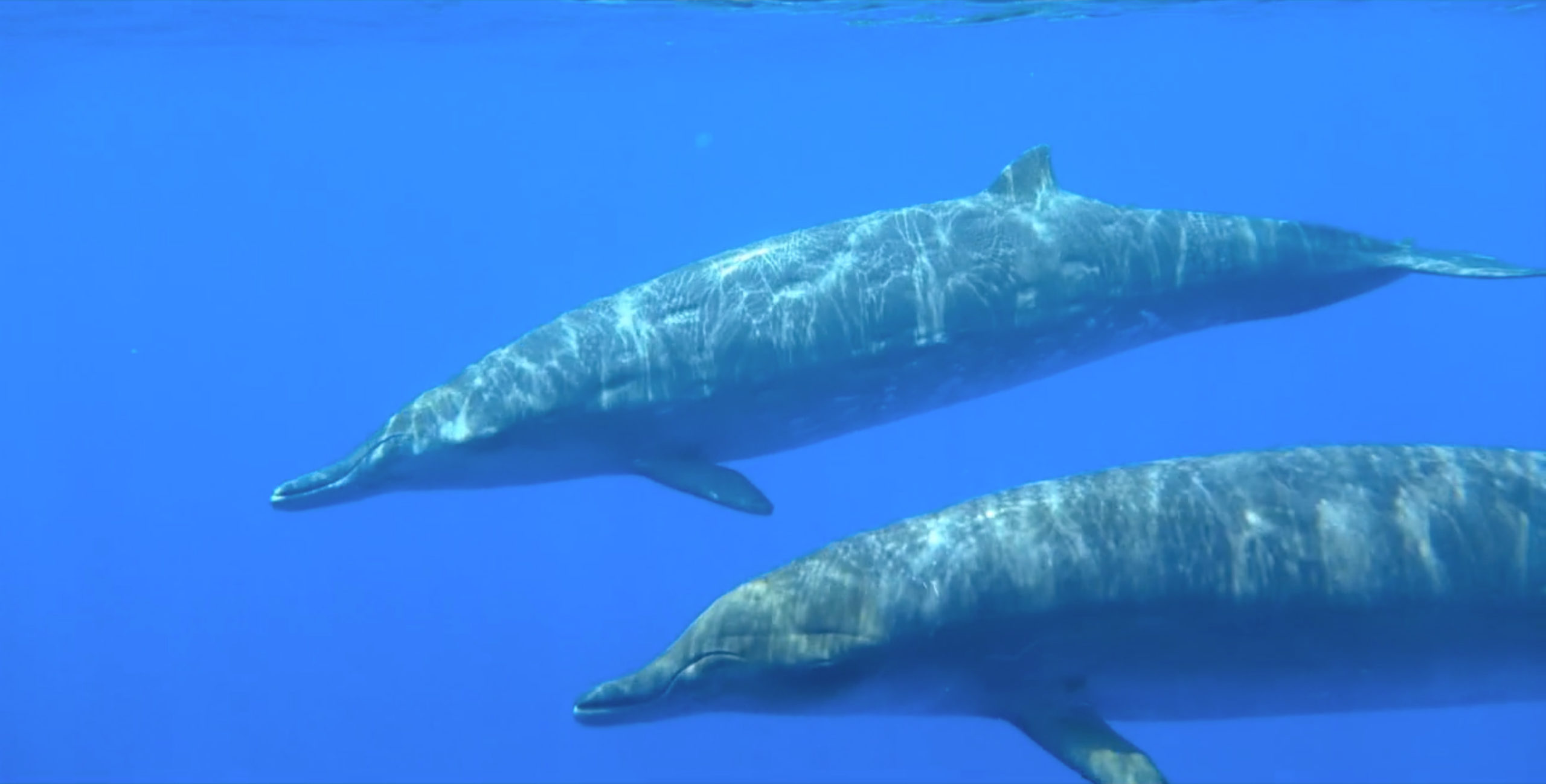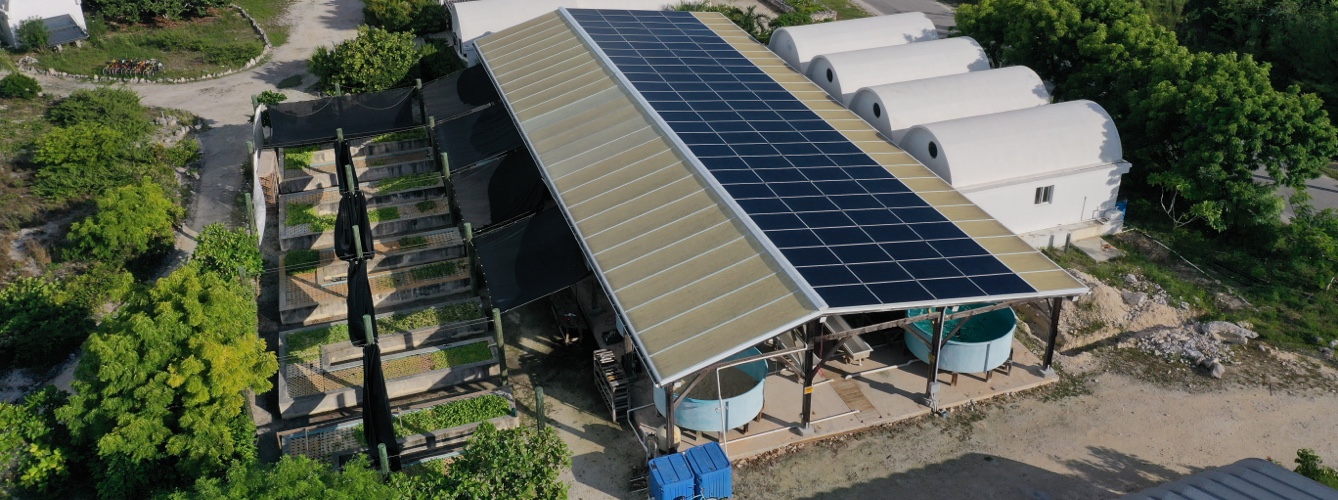Open Ocean
The Exuma Sound Ecosystem Research Project
The Exuma Sound, located in the eastern Bahamas, is a partially enclosed body of water covering almost 10,000 square kilometers of open ocean habitats. This region is home to many sharks, whales, seabirds, game fishes, and more. It is also relied upon for food and recreation.
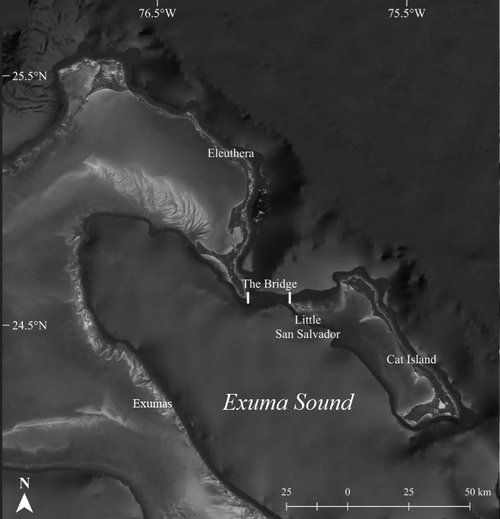
These crystal-clear waters are characterized by low levels of nutrients that are typical of subtropical and tropical ecosystems found elsewhere in the world. Researchers here at CEI have studied the fringes of the Exuma Sound extensively over the past ten years, but have yet to investigate life in the pelagic realm. The species that occur here, how they interact with each other, and how they behave in a relatively pristine environment remains a mystery.
As The Bahamas strives to protect 20% of the marine environment by 2020, there is a growing need to recognize the value of offshore resources and to inform the siting of marine protected areas in these pelagic areas that are often ignored in conservation plans.
The goal of the Exuma Sound Ecosystem Research Project is to provide the data necessary to sustainably manage these incredible habitats here in The Bahamas and elsewhere around the world.
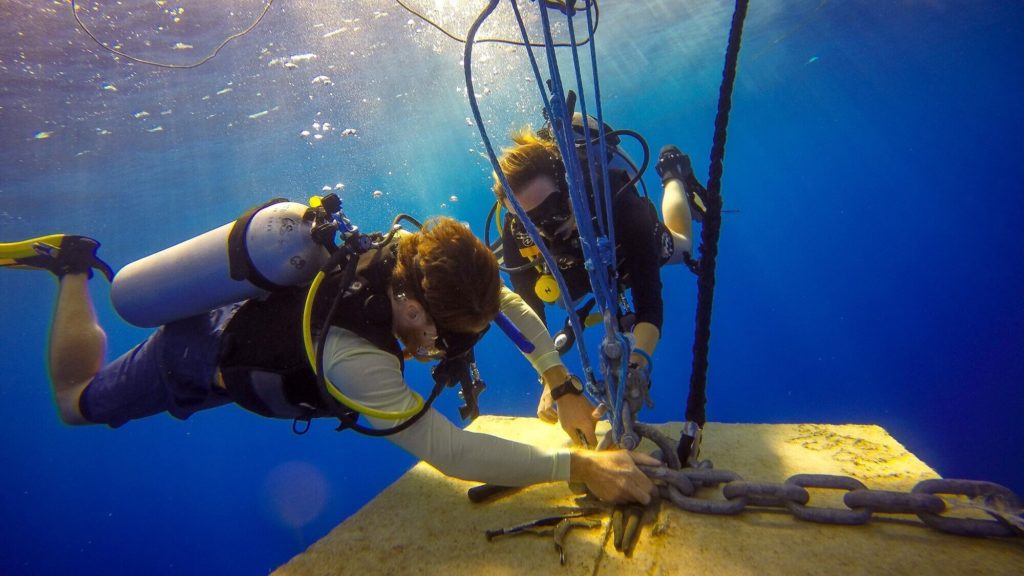
Pelagic Shark Ecology & Conservation
Preliminary surveys have shown that dusky and silky sharks are sporadically abundant here in Exuma Sound. All of the silky sharks that we have captured to date have been juveniles and subadults, leading us to believe that this region could provide some of the benefits of a nursery habitat to this species. All of these pelagic sharks are most commonly found in association with schools of tuna feeding at the surface.
Pelagic sharks like these are threatened by fisheries bycatch and direct exploitation in purse seine, longline, and gillnet fisheries around the world, including in the NW Atlantic and in the wider Caribbean region. Silky sharks in particular are among the most at-risk shark species in the Atlantic and are further listed on Appendix II of the Convention on International Trade in Endangered Species (CITES). In order to learn more about these animals and support their sustainable management, we are conducting a series of research projects on the following:
- Ecological Role What do these species eat and what role do they play in the wider food web? Where do they feed and what habitats provide them with the most nutrients?
- Movements and Habitat Use Do pelagic sharks here migrate over long distances or are they resident in Exuma Sound? What factors drive the horizontal and vertical movements of these animals? At what depths do these species occur, and how might their preferred depths overlap with commercial fisheries elsewhere?
- Vulnerability How do silky and dusky sharks respond to longline capture? Can we reduce bycatch associated with fish aggregation devices (FADs) by understanding their behavioral ecology?
Fish Aggregation Device (FAD) Research
Fish aggregation devices (FADs) constitute any natural or man-made objects that attract fish to a certain location, such as driftwood, sargassum mats, or buoys. They have been leveraged by fishers for centuries and now play a large and often controversial role in commercial fisheries, contributing to more than half of the tuna catch landed globally.
Bycatch is very common when fishing man-made FADs because of the diversity of species concentrated in mixed schools around one structure. As FADs can attract marine species that would normally travel long distances between feeding, breeding, and birthing grounds, FADs may also act as ‘ecological traps’ that disrupt normal fish behavior.
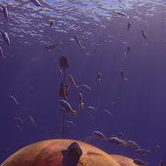
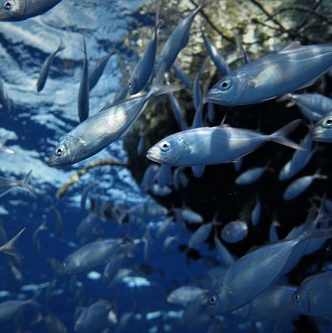
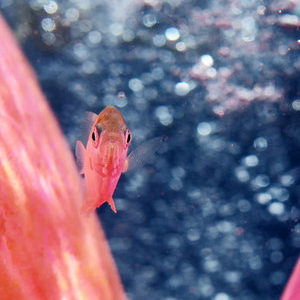
In late 2017, researchers at the Cape Eleuthera Institute deployed two sub-surface FADs at 10m deep anchored in 600m of water to create a platform to study and promote the conservation of pelagic fish and better understand the role of FADs in altering fish movements. Unique in that they are hidden from fishing activity, these FADs can give us an exciting look into the lives of wide- ranging, highly migratory predators such as mahi-mahi and wahoo as well as small baitfish seeking cover in the open ocean.
We are conducting a series of research projects on the following:
- Colonization and Succession What species use artificial FADs compared to natural FADs in the Exuma Sound? How does biomass accumulate on a FAD and change over time? Do video surveys and side-scan sonar adequately characterize FAD-associated fish assemblages?
- Migratory Behavior What are the migratory pathways of large game fish that use the FADs here? Do the same fish return year after year and are they Bahamian residents, or are they relevant to fisheries elsewhere?
- Acoustic Telemetry How do recreationally and commercially important fishes use FADs on a fine scale? How do sportfish and sharks overlap or differ in their residence patterns?
Marine Mammal Ecology & Conservation
Marine mammals are among the top predators in the Exuma Sound, diving deep to target fish and squid living within the twilight zone. However, the full range of species that occur here is still unknown, as is their behavior in an environment that is free from sonar and heavy boat traffic. Comparing behavior in this relatively pristine environment to nearby regions more affected by anthropogenic stressors is of interest to the US Navy and others, particularly as deep-diving whales are among the most likely to strand after intense sonar activity.
Preliminary surveys have shown that poorly studied marine mammals of conservation interest occur in Exuma Sound, including Blainville’s, Cuvier’s, and Gervais beaked whales, pilot whales, dwarf sperm whales, Risso’s dolphins, killer whales, and more. While these species have been studied elsewhere in the western Atlantic, our knowledge of them in the southeastern Bahamas is entirely lacking. Thus, documenting sightings and understanding the role that these species play in the ecosystem can support the placement of marine protected areas in the future and help us better mitigate anthropogenic disturbance. To do so, we intent to conduct a series of projects that shed light on the following:
- Using Cutting Edge Technology to Uncover Whale Hotspots How can new technology be used to identify important whale habitat? Through the use of a fixed- wing drone and a side-scan sonar, we can greatly increase our search area in finding these animals and locating important foraging habitats throughout the Exuma Sound.
- Seasonality & Migratory Behaviors When and how far do these species travel? Are they Bahamian residents? What are critical habitats for them in the Exuma Sound? What environmental variables predict their occurrence here?
- Trophic Ecology & Nutrient Transport What are the dominant prey species for cetaceans in Exuma Sound, and what role do marine mammals occupy in the pelagic food web? Further, what role do pelagic marine mammals play in the transport of nutrients from deep waters to the surface?
- Acoustic Disturbance What characterizes natural diving behavior in beaked whales and how are those behaviors impacted by sonar activities on the US Naval Range in the Tongue of the Ocean (“AUTEC”) compared to the Exuma Sound?
The Island School Stories
The open ocean is the largest habitat on Earth, but is often overlooked because of its relative inaccessibility. We study the uniquely adapted animals that inhabit the pelagic ecosystem, how they interact with each other, and how humans are impacting them.
Ocean Oases: Understanding the Ecology of Sargassum Communities
Sargassum is a unique marine algae that can complete its entire life cycle without ever attaching to a substrate. Instead, it drifts in ocean currents indefinitely and plays an important ecological role in the pelagic zone by providing shelter to small fish and invertebrates as a foundation species. In turn, it is a key foraging ground and nursery habitat for commercially important fish, marine turtles, seabirds. A number of factors such as elevated sea surface temperatures, ocean acidification, and runoff have led to a proliferation of Caribbean sargassum in the last five years.
Unfortunately, sargassum also tends to accumulate marine debris like plastic within its entangled mass, increasing the chances of ingestion by fish and other organisms living there.
As this patchy and ephemeral habitat has yet to be studied in the Exuma Sound, its ecological contribution to the larger food web remains to be understood in the face of a changing climate.

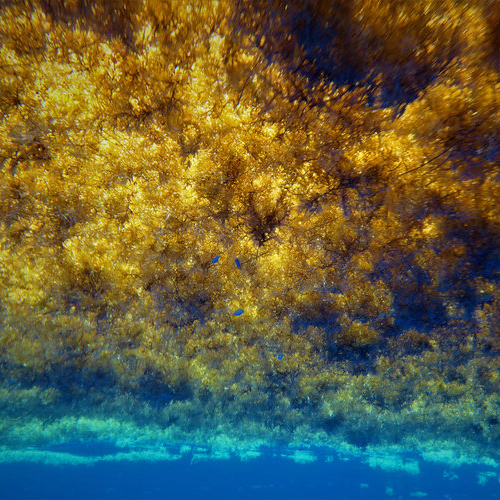
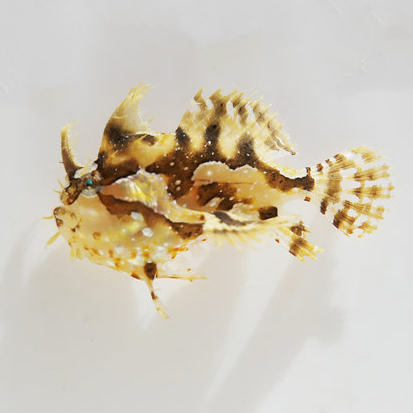
To inform the sustainable management of pelagic fisheries here in The Bahamas and wider Caribbean region, we hope to conduct a series of research projects that shed light on the following:
- Biodiversity What species inhabit sargassum mats in the Exuma Sound? Are there any species of conservation interest (hatchling sea turtles, juvenile sportfish, etc.) in these communities?
- Plastic Pollution What proportion of a sargassum mat is comprised of plastic or other marine debris? Have any associated animals ingested or become entangled in plastic?
- Trophic Ecology What role do sargassum communities play in supporting the pelagic food web of this region? What is their importance in the open ocean and deep ocean relative to other sources of primary production from the nearby coastal and reef-associated ecosystems?
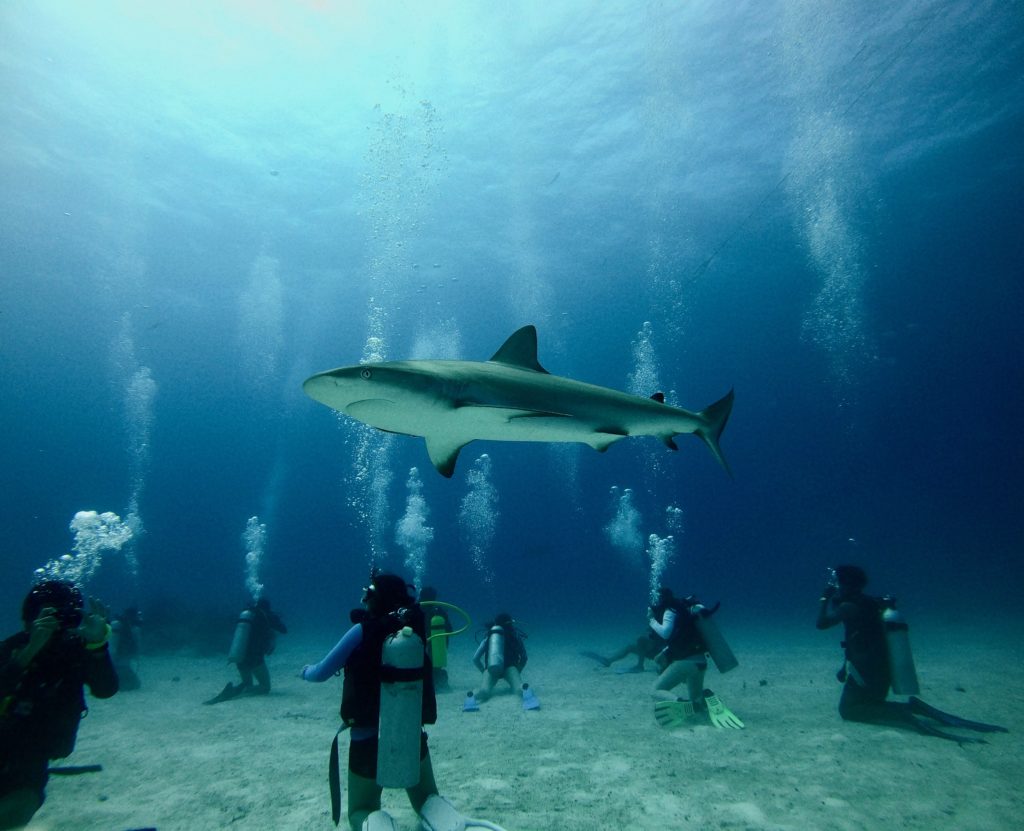
Seabird Ecology & Conservation
Fishermen have long known to look to the sky to identify bursts of feeding activity beneath the waves and to target big game fishes chasing bait balls to the surface. In an area with limited prey and abundant oceanic predators, seabirds must be fierce competitors to get their share of the baitfish and squid that make up the bulk of the diet of these subsurface hunters.
Preliminary surveys offshore have shown that the Exuma Sound hosts a diverse assemblage of seabird species that are of conservation interest, including the Audubon’s shearwater, bridled and sooty terns, white-tailed tropicbirds, magnificent frigate birds, brown noddies, white-crowned pigeons, Wilson’s storm petrels, and even black-capped petrels.
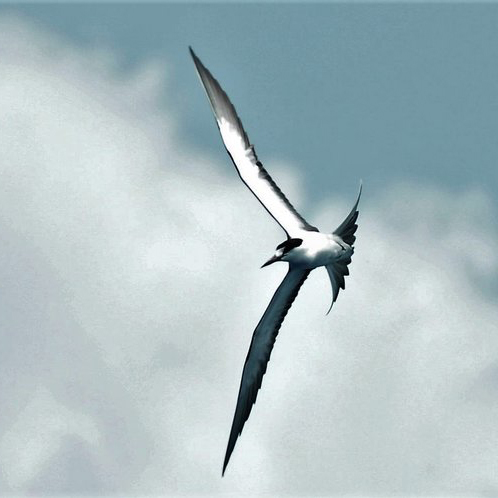
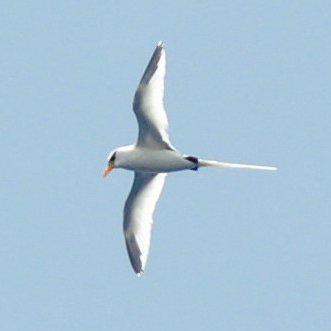
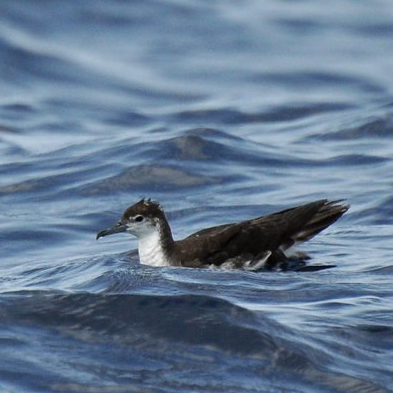
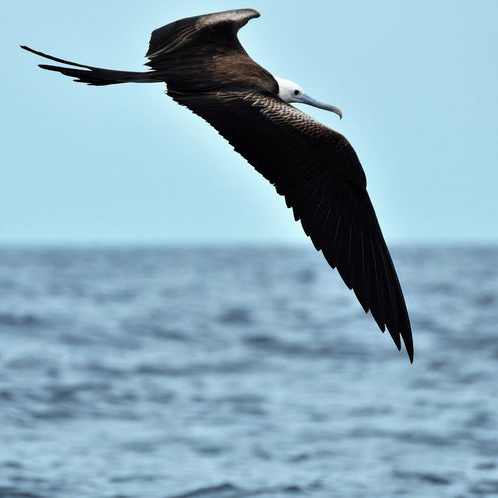

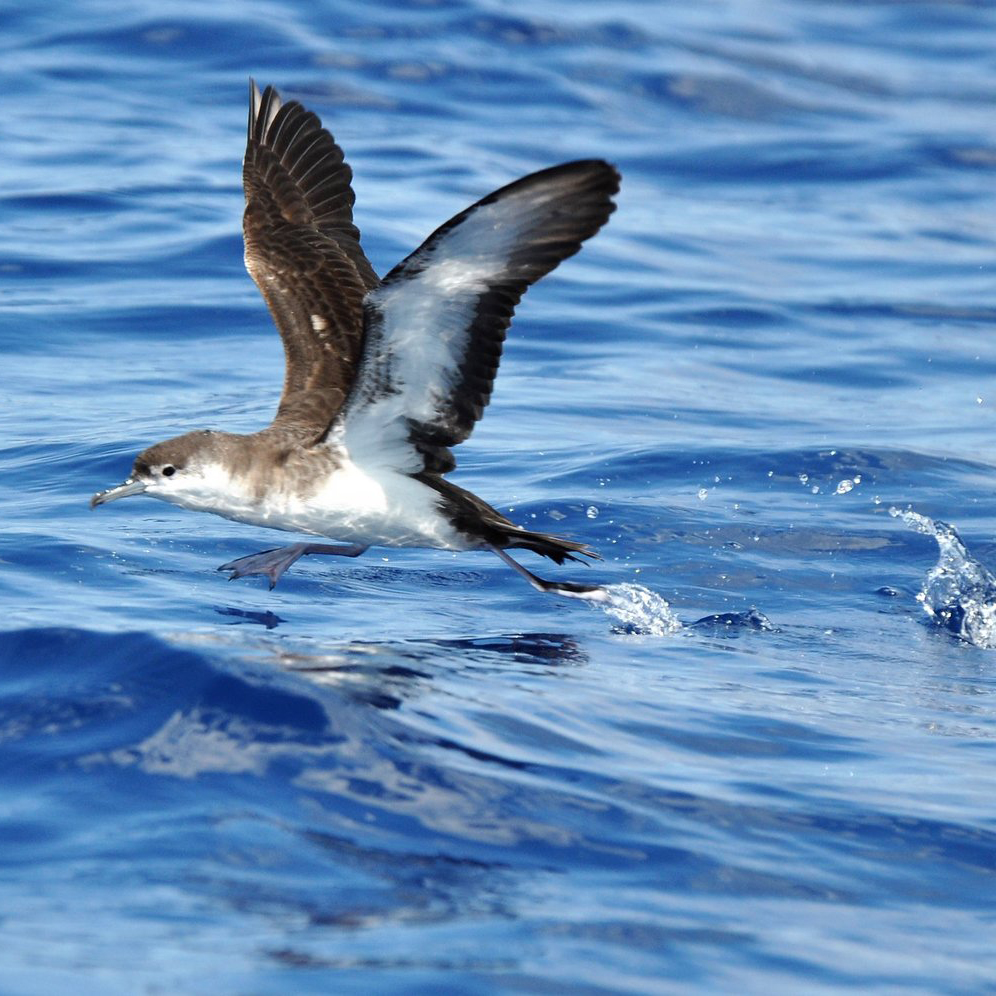
Many of these species breed in the Bahamas, but practically no information exists on the importance of the Exuma Sound as a foraging area during the reproductive season. To support the sustainable and often international management of these species, we hope to conduct a series of research projects that shed light on the following:
- Migration Patterns When and how far do these species travel? Are they Bahamian residents or seasonal visitors? On which islands do they nest and where do they feed and roost? What are critical foraging and breeding habitats for each species within the eastern Bahamas?
- Feeding Ecology & Toxicology What are the predominant prey species for seabirds in the Exuma Sound, and where do these birds fall in the pelagic food web? How does their diet influence the accumulation of toxins in their tissues? Do seabirds contain high levels of toxins here, in a relatively pristine environment, compared to more developed areas in the region like the east coast of Florida?
- Vulnerability What is the population status of pelagic seabirds around the Exuma Sound? Are their nests preferentially located in places that lack egg predators, such as on isolated keys off of the main Bahamian islands?
